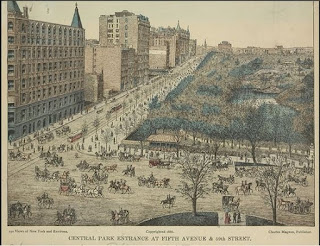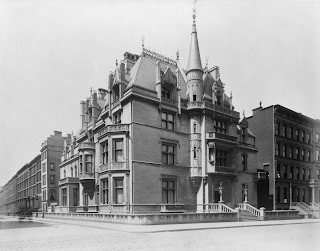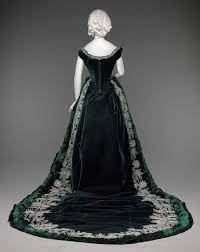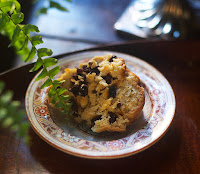I have wanted to write about Max Beerbohm for years. Zelig-like, he appears regularly in the English-speaking cultural timeline of the late 19th to mid 20th century and beyond - he knew and was known by everyone. Sometimes it felt as if Max was reminding me to write about him since his name popped up so often in things I was reading, so I kept compiling books, drawings and articles as I came across them – collecting as if that would assure Max I was not going to welch on the deal. At long last, the promise is kept. It has been a great joy to dig into his remarkable life.
Art critic Roger Fry in his Vision and Design sagely observed that “ordinary people have no idea of what things really look like, because they are so accustomed to observing only those objects which, for the practical purposes of life, it is necessary for them to observe.” Max absorbed all the details. In researching this, I got to explore and share his vision as a ‘profound critic of men” -- see my fellow humans with fresh eyes.
Max Beerbohm 1872-1956, Nicholson
Max Beerbohm. For those of you who don’t joyfully dwell in the past as I do, George Bernard Shaw called him “The Incomparable Max”. Edith Wharton announced that to have dinner with Max, "was like suddenly growing wings." When Rebecca West heard Max’s beautifully spoken words on his legendary WWII BBC broadcasts she announced, "I felt that I was listening to the voice of the last civilized man on earth. Max's broadcasts justify the entire invention of broadcasting." The whole of the British Isles felt an enormous heartstring tug to the warm safety of the past that Max painted so beautifully with his talks during the terrible times of WWII (a tug to the past that's all the more visceral and relatable after the death of Queen Elizabeth last week). His voice is from another time and so very, very listenable (you can hear a sample HERE ). A whole generation thought of him as a safe port in a raging war storm.
Some Persons of the Nineties 1925
Merton College, Oxford
Max was born in 1872 and while still at Merton College, Oxford, he joined the shimmering, creative firmament of Oscar Wilde and Aubrey Beardsley and their company at Café Royal -- the “haunt of intellect and daring” as an observer and chronicler (I wrote of Café Royal HERE 7 years ago– one of my favorite posts and what first got me thinking about Max).
Aubrey Beardsley 1894
Max 1901
It probably didn’t hurt his social life that his much older half-brother was the famous actor/theater manager, Herbert Beerbohm Tree who produced the plays of Wilde and Shaw and the like (Shaw gifted young Max his job as drama critic at the Saturday Review in 1898 - he remained till 1910 when he moved to Italy).
Tree paid for the new His Majesty’s Theatre with the fortune from his portrayal of the first Svengali in London in 1895 – (I wrote about the history of the book, play and film of Trilby HERE) and many of the classic plays of the period were first performed there. Accompanying his older brother to the theatre and in society made Max familiar with the artists and writers of the day from a very early age and Max absorbed that world like a sponge through those enormous, all-seeing Owl eyes of his.
He first published his caricatures in The Strand Magazine at the age of 20 – this time capturing and satirizing to perfection the habitués of the famous clubs of the day (he had a reputation for his drawings already at Oxford but had been at it since childhood).
Yellow Book 1894, cover by Aubrey Beardsley
It was Beardsley who told him that he should write on first acquaintance and then got him hired to write for the first edition of The Yellow Book in 1894. A Defense of Cosmetics, (a cheeky defense of decadence), was a scandal. He relished the notoriety and was amused that the chattering class were either inspired or infuriated by his essays and stories. He knew how to ruffle feathers with artfully applied observations in prose and poetry, a skill that he attributed to his youthful mastery of Latin and Greek that made his writing stronger – like a classical drawing class for an artist – the old language skills provided structure for his word-work).
Max 1901
Max took his art seriously and worked at his caricature-craft. He believed that, “the perfect caricature (be it of a handsome man or a hideous or an insipid) must be the exaggeration of the whole creature, from top to toe. Whatsoever is salient, must be magnified, whatsoever is subordinate must be proportionately diminished. The whole man must be melted down, as in a crucible, and then, as from the solution, be fashioned anew. He must emerge with not one particle of himself lost, yet with not a particle of himself as it was before. And he will stand there wholly transformed, the joy of his creator, the joy of those who are privy to the art of caricature... The perfect caricature is not a mere snapshot... it is the epitome of its subject's surface, the presentment (once and for all) of his most characteristic pose, gesture, expression.”
Lytton Strachey
He did have a strict theory as to how to best capture a subject, “A caricature done at sight was mere hit-or-miss — usually miss. At best it could only be superficial. True, one didn’t have to know a man well before one could do a good caricature of him. On the contrary, as soon as one knew a man really well, one ceased to have a clear vision of him -took him rather as a matter of course. But acquaintance... was a necessity".
Rossetti as a Child
Rossetti in his Back Garden
Rossetti and Fabrics
Max felt Rossetti “shone, for men and women who knew him, with the ambiguous light of a red torch somewhere in a dense fog.” When Rossetti and his Circle was published, the Times said each drawing “was worth a whole volume of sermons on ideals in art and life” and Rosetti’s niece felt nothing compared to Max’s book on the group - it was so “accurate a picture of its physical and spiritual composition.”
Max once said, “The past is a work of art, free of irrelevancies and loose ends." In his fond paean to the circle – I would say he nailed it.
Max once said, “The past is a work of art, free of irrelevancies and loose ends." In his fond paean to the circle – I would say he nailed it.
I think of it in set design – when you are trying to show an audience a life or 'a tone of mind' in a few objects, colors and placement of a few sticks of furniture. The better the design, the more you get from that all important first 10 seconds the space is revealed on film.
I guess that’s why I have been drawn to Max who believed: “The beauty of a work of art lies not at all in the artist's vision of his subject, but in his presentment of the vision." " The most perfect caricature is that in which, on a small surface, with the simplest means most accurately exaggerates, to the highest point, the peculiarities of a human being.”
There was often another element in his work beyond the figure drawing. Max often drew props or a physical environment to help tell the story of his subject and he spoke of his relationship with favorite possessions in a revealing way in series of interviews with SN Behrman at Max's home at Villino Chiaro in Rapallo, Italy in the last years of this life - I empathized with his meaningful attachments completely. It is certainly how I perceive my own special totemic objects, many of which have been with me forever and which hold keys that bring me closer to events and people of my past. They are the Lares and Penates that I carry through my life. Max used that relationship in some of his caricatures - the setting revealing even more about the person in the picture - their tastes, history and even color choices as well as their physical being.
Matthew Arnold 1904
Quis Custodiat Ipsum Custodem? With Watts Caine and Shields saturated
Max’s possessions, even the color of his study, followed him from youth to old age, “The study was a square room of modest size, with blue-painted walls. Max's nursery had had blue-painted walls, as did his rooms in Merton, and he had brought his color scheme to his final home in Italy.
On the walls hung a series of caricatures done by Max in imitation of the style of the great Italian caricaturist Carlo Pellegrini—"Ape," as he signed himself—whom Max revered as a master of the craft. The caricatures were imitations, but the legends were Max's own. Original Pellegrini drawings cut out of "Vanity Fair" had hung in Max's rooms in Merton, and later in those he occupied in his mother's house in London.” He continued to copy Pellegrini throughout his life to inspire - and remember.
Watts Caine and Shield above
Max also had a favorite mirror that was invested with meaning for him and followed him through his long life, “"Well, you see, it is convex," Max said. "There is no poetry in a straight mirror—just a reproduction of life. But what one sees in a convex mirror is a complete picture, a composition, an intérieur. By miniaturizing, it concentrates and essentializes. It hung in my nursery, this mirror. Then, when, as a young man, I occupied rooms on the top floor of my mother's house, I had it moved up there. It has been with me ever since. My father bought it at the Paris International Exhibition of 1867. It seems to me that during my childhood I was half asleep, but as I grew a bit older, this mirror began to fascinate me. I began to think of all that it had seen since my father bought it; he used to have it in his rooms. And then, when I reached the age of twenty-one—the age of reminiscence, of seasoned reminiscence—I began to see this mirror as a collaborator, with memories of its own, a temps perdu of its own. I began to write a novel about it, an autobiographical novel called 'The Mirror of the Past.' I wanted to corporealize all the backs the mirror had seen leaving my room." I am devastated that he never finished it - the idea is magnificent. The mirror view kept moving back in time, displaying events performed by the people in the room. Max thought the idea was too complicated to work but always kept the magic mirror notion in his imagination. Eavesdropping on the past held a great fascination for Max - he was always holding a hearing horn to the wall of the past and reported time's echoes so eloquently. Toward the end of his life he did write a radio script based on that idea of looking back - “Hethway Speaking" - sans mirror.
Max 1905
"Oh," said Max, "it is a photograph from a book about Huysmans; it is the Abbé Mugnier with the little daughter of the Countess de Castries. I never look at it without its cheering me up. How happy she is! How happy they both are!"
The essay is called "A Relic." Max describes how, rummaging about in an old trunk, he came upon the fragments of a fan. The moment he came upon these fragments, he heard himself murmuring a sentence: "Down below, the sea rustled to and fro over the shingle." He goes on to recall an incident of his youth. Max was nineteen. He was sitting at a table of the café on the terrace of the casino in Dieppe, drinking a glass of bock, when he beheld a startling scene.” It was a woman chased by a man and the fan she had abandoned that he picked up. “He decided to call it "The Fan"—very Maupassantish. Maupassant would have needed no more; why should he need more? He felt very cynical and worldly, and, after all, Maupassant was so simple; Maupassant was just an observer, like him.” Try as he might, “the plum did not ripen,” and the story was never finished.
Henry James 1904
This is best illustrated in his 1912 collection of stories, A Christmas Garland. Here he deftly copies yet gently skewers the styles of the favorite authors of the day - essentially word caricatures. The stories are just long enough to paint the delicious word caricature of the authors (many are around 10 small pages long). Regretably, many of the authors like Moore and Meredith are forgotten – you will have to read them first to understand the art of Beerbohm’s literary likenesses. Here’s a sample from “A Mote in the Middle Distance” by H*NRY J*M*S – close your eyes and dream of James' more familiar Washington Square or Portrait of a Lady:
“It occurred to him as befitting Eva's remoteness, which was a part of Eva's magnificence, that her voice emerged somewhat muffled by the bedclothes. She was ever, indeed, the most telephonic of her sex. In talking to Eva you always had, as it were, your lips to the receiver. If you didn't try to meet her fine eyes, it was that you simply couldn't hope to: there were too many dark, too many buzzing and bewildering and all frankly not negotiable leagues in between.”
Behrman made a penetrating observation about his subject. He shrewdly discerned that Max, “had a severely topiary intelligence; he knew where he could go and where he couldn't go, what he could do and what he couldn't do." Max admitted as much, "I am not creative in a big way ... I haven't any powerful invention; I used up all I had. What I really am is an essayist." When Max wrote about JM Whistler's prose style, he might as well have been assessing his own work, "An exquisite talent like Whistler's, whether in painting or in writing, is always at its best on a small scale. On a large scale it strays and is distressed. . . . For no man who can finely grasp a big theme can play exquisitely round a little one." Play exquisitely -- yes -- that is the best way to work.
“It occurred to him as befitting Eva's remoteness, which was a part of Eva's magnificence, that her voice emerged somewhat muffled by the bedclothes. She was ever, indeed, the most telephonic of her sex. In talking to Eva you always had, as it were, your lips to the receiver. If you didn't try to meet her fine eyes, it was that you simply couldn't hope to: there were too many dark, too many buzzing and bewildering and all frankly not negotiable leagues in between.”
Behrman made a penetrating observation about his subject. He shrewdly discerned that Max, “had a severely topiary intelligence; he knew where he could go and where he couldn't go, what he could do and what he couldn't do." Max admitted as much, "I am not creative in a big way ... I haven't any powerful invention; I used up all I had. What I really am is an essayist." When Max wrote about JM Whistler's prose style, he might as well have been assessing his own work, "An exquisite talent like Whistler's, whether in painting or in writing, is always at its best on a small scale. On a large scale it strays and is distressed. . . . For no man who can finely grasp a big theme can play exquisitely round a little one." Play exquisitely -- yes -- that is the best way to work.
I finish with one of my favorite Max lines from the end of his story, "The Golden Drugget.” Here he tells a tale of the enchanted light in the darkness in his Italian town of Rapallo during WWI. A drugget is a rough rug – the golden drugget image would be the rough street illuminated by the Inn's light – such a beautiful image and resonant message then and now:
“Stranger, come in!' is the clear message of "The Golden Drugget". "'This is but a humble and earthly hostel, yet you will find here a radiant company of angels and archangels.' And always I cherish the belief that if I obeyed the summons I should receive fulfilment of the promise. Well, the beliefs that one most cherishes one is least willing to test. I do not go in at that open door. But lingering, but reluctant, is my tread as I pass by it;
"and I pause to bathe in the light that is as the span of our human life, granted between one great darkness and another.”
Ah Max- you have lived on in the hearts of so many --- here’s hoping this little tease will encourage new acolytes who walk with open eyes and hearts to see the world before them and follow Max’s favorite line of Henry James, “Be generous and delicate and pursue the prize”.
Ah Max- you have lived on in the hearts of so many --- here’s hoping this little tease will encourage new acolytes who walk with open eyes and hearts to see the world before them and follow Max’s favorite line of Henry James, “Be generous and delicate and pursue the prize”.
The Royal Family has been much on my mind of late. Max did many drawings of Victoria and the Prince of Wales -- and felt great affection for them. Too bad he missed nearly all of Queen Elizabeth's reign -- I'm sure he would have made her smile with his drawings of her and her circle -- everyone said she had a great sense of humor.
I dedicate this to Queen Elizabeth II whose passing tugged the whole world's heartstrings this past week - most certainly mine.
"Vanished. That life and that era—vanished." Requiscat in pace.
VICTORIA and Prince of Wales 1900
Click to get the picture books and bio:
*Most of his fiction is available for free online - or buy the books and savor.
So, what to eat?? Since Max was a master of 2 crafts and I haven’t been writing for ages, I give you 2 recipes for little birds that I can imagine Max enjoying whilst sitting on the terrace at Villino Chiaro - enjoying the blue Mediterranean breeze and the warm laughter of friends.
Each recipe is sweet and savory and a delight. The Sherried Orange sauce from Spain is delicious on its own and the Chicken Rapallo is based on the Famous Silver Palate Chicken Marbella but with figs and not prunes.
Sherried Orange Sauce with Prunes (enough for 4 Squab)
2c Earl Gray tea
Peel from 1 orange cut into strips
2-3” piece of cinnamon
4 cloves
1 star anise
5T sugar
2 oz Pedro Ximeniz or cream sherry (one oz for cooking and one oz added after cooking
2 oz orange juice
8 oz prunes
Put the first 8 ingredients in a pan and bring to a boil. Add the prunes and simmer for 20 minutes. Remove the prunes and simmer the sauce to reduce it a bit if needed. Add the second oz of sherry to the sauce and set aside.
Squab (serves 1-4 - 1 per person)
1-4 boneless squab from D'Artagnan
1-4 slices of bacon (one slice per bird)
1/4- 1 c of demiglace
sage leaves
Heat the oven to 500º
Salt and pepper the squab inside and out.
Sauté the bacon in the pan for the squab until crisp and remove and reserve. Keep the fat. Place the squab (s) in the bacon fat and put in the oven for about 12 minutes.
Take from the oven. Put pan over low flame and add the demiglace — spooning over the squab. Add the prunes and the sauce and the sage and warm the sauce with the bird. Sprinkle with bacon. Serve it forth!
If you make fewer than 4 birds - the prunes are delicious with ice cream or yogurt without the demiglace
Poussin Rapallo with Figs
Serves 1-2 (1 bird can serve 2 or 1 big eater)
1 poussin, semi-boneless (from D'Artagnan)
4 cloves of garlic, crushed
6-8 pitted olives (green or black Moroccan)
8 figs, dried, fresh, or combination (can replace with prunes)
MARINADE
1/4 cup olive oil
1/4 cup wine vinegar
3-4 bay leaves
1 tablespoon dry oregano
2 tablespoons capers with juice
Salt and pepper to taste
SAUCE
1/4 -1/3 cup white wine depending on how much sauce you want
2 - 3 tb. brown sugar
2 tablespoons chopped parsley
Combine marinade ingredients. Mix the poussin and fruit, garlic, and olives in a bowl, then add the marinade. Put it in the refrigerator overnight.
Heat the oven to 350º degrees. Place the poussin in an oven-proof pan and pour the marinade over it. Then pour the wine over the chicken and sprinkle it with the brown sugar.
Cook for 25-30 min (or until internal temp is 165 degrees), basting a few times during the baking.
Cut poussin in half and serve with the fruit and juices. Great over rice or orzo. The juices are so good that you’ll want to spoon them up.




















































































